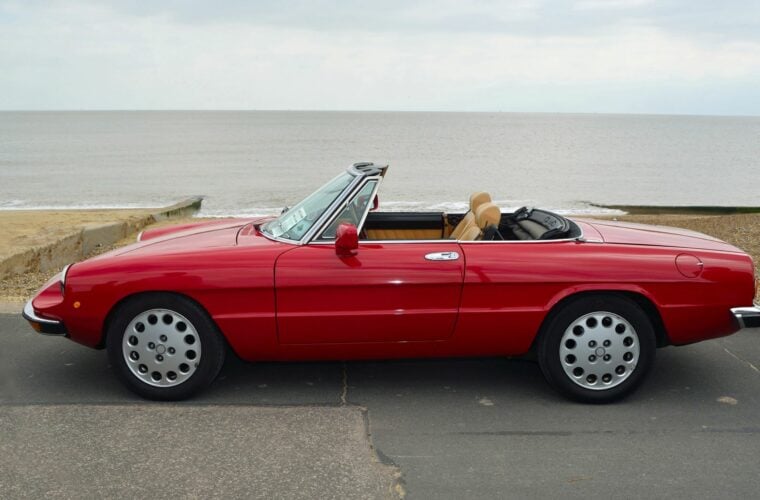Worst Car Brands Ever: Navigating the Automotive Minefield
Worst Car Brands Ever: Navigating the Automotive Minefield cars.truckstrend.com
The automotive market is a vast landscape, brimming with innovation, engineering marvels, and brands that consistently push the boundaries of performance and luxury. However, for every success story, there are cautionary tales – brands or specific models that have, for various reasons, earned a reputation for being the "worst." This isn’t just about personal preference; it encompasses a complex interplay of factors including reliability, build quality, safety, customer satisfaction, and long-term ownership costs. Understanding what makes a car brand "worst" is crucial for any consumer, offering invaluable insights to avoid costly mistakes and ensure a satisfying ownership experience.
This comprehensive guide delves into the characteristics that define a "worst car brand," explores historical examples, identifies red flags, and offers actionable advice to help you navigate the automotive minefield and make informed decisions.
Worst Car Brands Ever: Navigating the Automotive Minefield
Defining "Worst": More Than Just Breakdowns
The label "worst" is multifaceted and extends far beyond a car simply breaking down. While mechanical failures are a significant component, a truly "worst" car brand or model often exhibits a constellation of issues that degrade the entire ownership experience. Key criteria include:
- Reliability: This is perhaps the most critical factor. It encompasses the frequency and severity of mechanical and electrical failures. A reliable car requires minimal unscheduled repairs, keeping maintenance costs low and owners on the road. Brands known for consistent breakdowns, recurring issues, or persistent "check engine" lights quickly earn a poor reputation.
- Build Quality: This refers to the fit and finish, the quality of materials used, and the overall structural integrity of the vehicle. Cheap plastics, rattling interiors, ill-fitting panels, and premature wear and tear on components speak volumes about a brand’s commitment to quality control.
- Safety: While modern safety standards have significantly improved, some historical models or specific designs have been criticized for poor crash test performance, inadequate braking, or fundamental design flaws that compromise occupant safety. Regular recalls also indicate underlying safety concerns.
- Customer Service & Warranty Support: Even reliable cars can have issues. How a brand and its dealerships handle warranty claims, provide parts, and support their customers post-purchase can drastically impact perception. Poor customer service, difficulty obtaining parts, or a reluctance to honor warranties are significant red flags.
- Resale Value & Depreciation: Cars from "worst" brands often suffer from rapid and severe depreciation. Their poor reputation makes them difficult to sell on the used market, leading to significant financial losses for the original owner.
- Design & Ergonomics: While subjective, glaring design flaws, uncomfortable interiors, poor visibility, or unintuitive controls can contribute to a negative ownership experience. The infamous Pontiac Aztek is a prime example of a vehicle widely criticized for its polarizing aesthetics and questionable ergonomics, despite not being the most unreliable car of its era.

The Hall of Shame: Brands and Eras That Underperformed
Throughout automotive history, certain brands or periods within a brand’s history have become synonymous with poor quality, unreliability, or market failure. It’s important to note that many of these examples are historical, and the automotive industry has largely learned from these mistakes.
- Yugo (Yugo America): Perhaps the most universally recognized "worst car ever," the Yugo GV imported to the U.S. in the late 1980s was an exercise in extreme cost-cutting. Based on an outdated Fiat design, it was notoriously unreliable, underpowered, unsafe, and plagued by a litany of mechanical and electrical problems. It quickly became a punchline and a symbol of automotive failure.
- Trabant (East Germany): A relic of the Cold War, the Trabant was produced in East Germany from 1957 to 1991. Made largely from duroplast (a form of plastic), powered by a smoky, inefficient two-stroke engine, and featuring laughably primitive technology, it was born out of necessity in a command economy. While charming in its own way for its historical context, it was objectively a terrible car by Western standards of reliability, safety, and performance.
- British Leyland (1970s-1980s): This conglomerate of British marques (Austin, Morris, Rover, Triumph, MG, Jaguar, Land Rover, etc.) was a byword for industrial strife, poor management, and appalling build quality in the 1970s and early 80s. Models like the Austin Allegro and Morris Marina were plagued by rust, electrical nightmares, mechanical failures, and shoddy assembly, severely damaging the reputation of once-proud British automotive engineering.
- Early Daewoo (U.S. Market, late 1990s): When Daewoo entered the U.S. market, its cars were aggressively priced but quickly gained a reputation for being cheaply built, unreliable, and lacking in safety features. Their rapid decline and eventual withdrawal from the U.S. market underscored their inability to compete on quality or long-term reliability.
- Some Fiat Chrysler Automobiles (FCA) / Stellantis Models (Historically): While modern FCA/Stellantis brands like Jeep, Ram, Dodge, and Chrysler have improved significantly, certain models and eras, particularly in the early 2010s, have been consistently cited in reliability surveys (like Consumer Reports) for issues ranging from electrical gremlins to transmission problems. While not "worst ever," they highlight how even major manufacturers can struggle with consistent quality across their lineup.
- Land Rover / Jaguar (Historically): Despite their luxury appeal and iconic designs, both Land Rover and Jaguar have historically ranked at or near the bottom of reliability surveys for years, particularly concerning electrical systems and complex components. While their off-road capability and luxury are undeniable, the frequent need for expensive repairs has deterred many potential buyers.
Common Pitfalls: Why Some Brands Fail to Deliver
The reasons behind a brand’s decline into the "worst" category are often complex, but common themes emerge:
- Insufficient Research & Development (R&D): Rushing products to market without adequate testing and development often leads to unresolved engineering flaws.
- Aggressive Cost-Cutting: Sacrificing quality of materials, components, or manufacturing processes to save money inevitably leads to reliability and durability issues.
- Poor Quality Control: A lack of rigorous checks at every stage of the manufacturing process allows defective parts or assembly errors to slip through.
- Ignoring Consumer Feedback: Brands that fail to listen to owner complaints or address recurring issues quickly lose trust and market share.
- Over-reliance on Outdated Technology: Sticking with old platforms or engines without significant updates can make vehicles uncompetitive in terms of efficiency, safety, or performance.
- Inadequate After-Sales Support: A poor dealership network, difficulty in sourcing parts, or a reluctance to honor warranties can severely tarnish a brand’s image, even if the cars themselves aren’t catastrophic.
Identifying Red Flags: How to Avoid a Lemon
Empowering yourself with knowledge is the best defense against purchasing a "worst" car. Here’s how to identify red flags:
- Consult Reliability Surveys: Reputable organizations like Consumer Reports, J.D. Power, and What Car? (UK) conduct extensive surveys on vehicle reliability based on owner feedback. Sites like RepairPal also offer insights into common repairs and costs.
- Check Recalls and Technical Service Bulletins (TSBs): The National Highway Traffic Safety Administration (NHTSA) database in the U.S. allows you to search for recalls by VIN. TSBs are less severe than recalls but indicate known issues that dealers are informed about.
- Read Owner Forums and Reviews: Real-world experiences from owners can be incredibly insightful, highlighting recurring problems or common frustrations. Be wary of overly positive or negative isolated reviews; look for patterns.
- Thorough Test Drive: Don’t just drive around the block. Test all features, listen for unusual noises, check the feel of the steering and brakes, and try various driving conditions (city, highway).
- Pre-Purchase Inspection (PPI): For any used car purchase, a PPI by an independent, trusted mechanic is non-negotiable. They can spot underlying issues that a casual observer might miss.
- Review Service History: A complete and consistent service history indicates that the previous owner maintained the vehicle well, often a good sign of overall reliability.
The Path to Redemption: Brands That Turned It Around
It’s important to remember that a "worst" reputation isn’t always permanent. Several brands have undergone remarkable transformations, learning from past mistakes and investing heavily in quality, design, and customer satisfaction.
- Hyundai and Kia: Once viewed as budget brands with questionable reliability, Hyundai and Kia have made incredible strides. Through massive investments in R&D, design, manufacturing quality, and offering industry-leading warranties, they are now consistently ranked among the most reliable and desirable brands.
- Volvo (under Geely): After years of being a reliable but somewhat staid brand, Volvo’s acquisition by Geely in 2010 injected new life. They’ve reinvented their design language, introduced cutting-edge technology, and maintained their reputation for safety, all while significantly improving perceived and actual quality.
These examples offer hope and demonstrate that brands can evolve, proving that past failures don’t necessarily dictate future performance.
Practical Advice and Actionable Insights
- Research is Paramount: Never buy a car impulsively. Dedicate significant time to researching models, reliability ratings, and owner reviews.
- Don’t Be Swayed by Price Alone: A cheap car can quickly become an expensive burden if it’s unreliable and requires frequent repairs. Consider the total cost of ownership, including fuel, insurance, maintenance, and depreciation.
- New vs. Used: While new cars offer peace of mind with a factory warranty, a well-researched used car from a reliable brand can be a fantastic value. Always get a PPI for used vehicles.
- Understand Your Needs: A reliable car for one person might not be for another. Consider your driving habits, budget, family needs, and prioritize what’s most important to you (e.g., fuel economy, cargo space, safety features).
- Regular Maintenance: Even the most reliable cars benefit from consistent, scheduled maintenance. This prolongs vehicle life and helps identify minor issues before they become major problems.
Common Issues Associated with Poor Car Brands and Their Financial Impact
This table illustrates typical problems found in poorly manufactured or designed vehicles and their potential financial burden.
| Common Issue/Characteristic | Typical Brand Association (Historical/General) | Impact on Owner | Estimated Financial Burden (Example Ranges) |
|---|---|---|---|
| Poor Electrical Systems | British Leyland, Early European/American models | Frequent breakdowns, non-functional features, safety risks | $500 – $2,500+ per repair; repeated issues |
| Rapid Rust/Corrosion | Yugo, Older European/Asian imports (pre-2000s) | Structural integrity compromise, unsightly, safety risk | $1,000 – $5,000+ for bodywork; vehicle total loss |
| Frequent Engine Failures | Yugo, Early Daewoo, some problematic engine designs | Major breakdowns, stranding, significant downtime | $3,000 – $7,000+ for major repairs/replacement |
| Transmission Problems | Some early CVT designs, problematic auto transmissions | Jerky shifts, power loss, complete failure | $2,000 – $6,000+ for repair/replacement |
| Low Quality Interior/Build | Early budget brands, some aggressive cost-cutters | Rattles, broken plastics, uncomfortable, poor resale | Negligible direct repair, but significant depreciation |
| Excessive Depreciation | Brands with poor reputation, market failures | Major financial loss upon resale | 20-50% more depreciation than average in 3-5 years |
| Poor Customer Service | Brands with limited dealer networks, poor support | Frustration, unresolved warranty issues, long repair times | Indirect costs of time lost, uncompensated repairs |
| Constant Recalls | Brands with consistent quality control issues | Inconvenience, safety concerns, potential liability | Free repairs typically, but time and trust lost |
Note: The financial burdens are illustrative estimates and can vary widely based on vehicle type, location, and severity of the issue.
Frequently Asked Questions (FAQ)
Q: Is "worst" purely about reliability?
A: No. While reliability is a major factor, "worst" also encompasses build quality, safety, customer service, resale value, and overall ownership satisfaction. A car can be reliable but still "worst" due to terrible design or poor safety.
Q: Can a "worst" brand ever improve?
A: Absolutely! Brands like Hyundai and Kia are prime examples of manufacturers that transformed their image from budget-oriented with questionable quality to highly reliable and desirable vehicles through significant investment in R&D, design, and manufacturing.
Q: Are luxury cars always reliable?
A: Not necessarily. Many luxury brands, historically and currently, have ranked lower in reliability surveys than some mainstream brands. Their complex electronics and advanced features can sometimes lead to more frequent and expensive repairs. Examples include some Land Rover, Jaguar, and even certain German luxury models.
Q: How do I check a car’s recall history?
A: In the U.S., you can check the National Highway Traffic Safety Administration (NHTSA) website (nhtsa.gov) by entering the vehicle’s VIN. Other countries have similar governmental or automotive association websites.
Q: Should I avoid all cars from brands that were historically on "worst" lists?
A: Not necessarily. It’s crucial to differentiate between a brand’s historical reputation and its current standing. Research the specific model year you’re considering. Many brands have made significant improvements over time.
Q: What’s the single most important factor when buying a car?
A: While subjective, for most consumers, reliability coupled with safety should be paramount. A car that frequently breaks down or compromises your safety negates any other benefits it might offer.
Conclusion
Understanding what constitutes a "worst car brand ever" is not about shaming manufacturers but about empowering consumers. By recognizing the red flags – whether they be consistent mechanical failures, shoddy build quality, or a history of poor customer service – you can navigate the complex automotive market with confidence. The stories of past failures serve as valuable lessons, reminding us that thorough research, a discerning eye, and prioritizing long-term value over short-term savings are the best strategies for a satisfying and safe automotive experience. Knowledge is your most powerful tool in avoiding the automotive minefield and driving home with a car that truly meets your needs and expectations.





